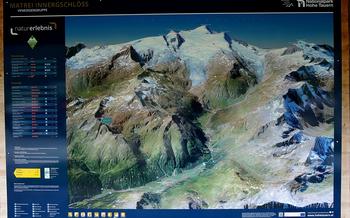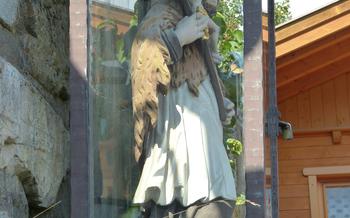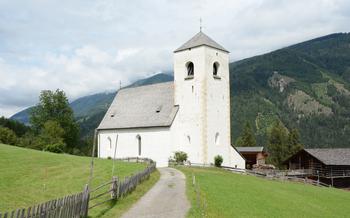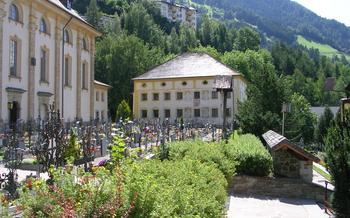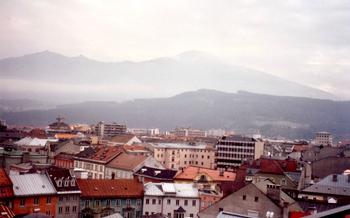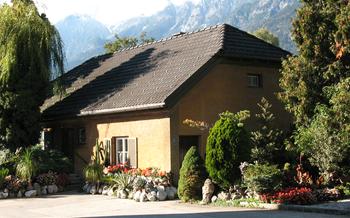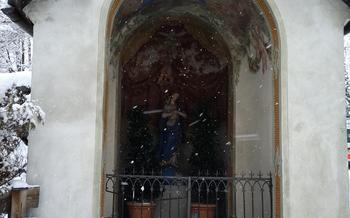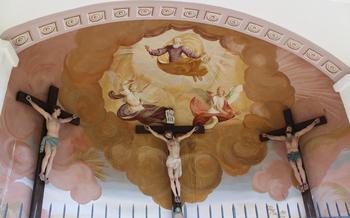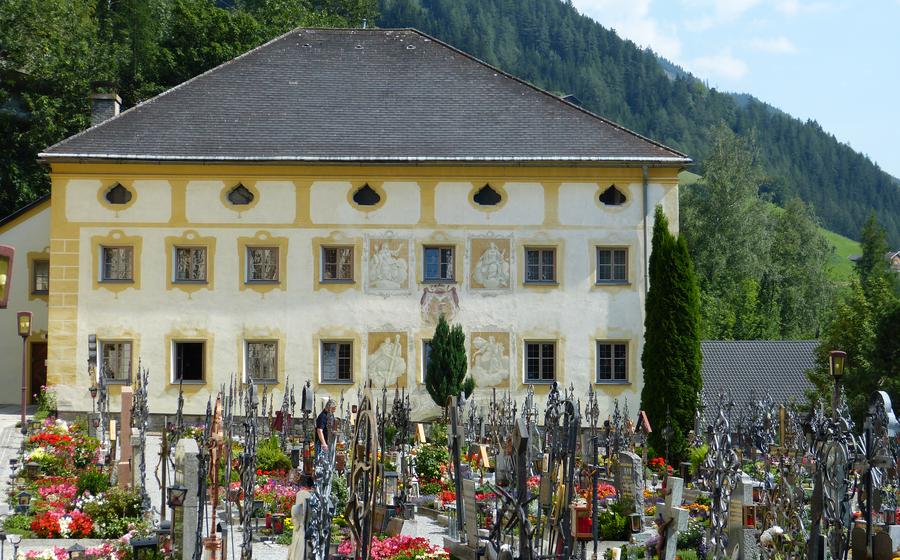
Bergbauernmuseum Mountain Farmer Museum
- Bergbauernmuseum Mountain Farmer Museum
- Discover the Fascinating History of Mountain Farming
- Immerse Yourself in the Traditional Lifestyle of Mountain Farmers
- Explore the Unique Architecture of Mountain Farms
- Styles of Mountain Farmhouses
- Construction Materials Used
- Adaptations to the Harsh Climate
- Influence of Local Culture on Architecture
- Learn About the Importance of Livestock in Mountain Farming
- Discover the Art of Cheesemaking in the Mountains
- Experience the Warm Hospitality of Mountain Farmers
- Hike Through the Breathtaking Landscapes of Matrei in Osttirol
- Visit the Nearby Villages and Towns
- Enjoy Outdoor Activities in the Pristine Nature
- Attend Local Events and Festivals
- Sample the Local Cuisine
- Purchase Local Products
- Stay in a Traditional Mountain Farmhouse
- Insider Tip: Plan Your Visit
Bergbauernmuseum Mountain Farmer Museum
Nestled in the heart of Matrei in Osttirol, the Bergbauernmuseum Mountain Farmer Museum offers a captivating glimpse into the rich heritage and traditions of mountain farming in the region. Established in 1976, the museum is housed in a beautifully preserved 16th-century farmhouse and showcases a vast collection of artifacts, tools, and machinery that narrate the intriguing history of mountain farming in Osttirol. From traditional farming practices to the unique challenges faced by mountain farmers, the museum provides an immersive and educational experience for visitors of all ages.
Its collection boasts over 10,000 artifacts, including farming tools, household items, and traditional costumes, providing a comprehensive insight into the daily lives of mountain farmers in the region throughout history. The museum's exhibits are arranged thematically, allowing visitors to explore different aspects of mountain farming, such as livestock raising, cheesemaking, and forestry. Interactive displays and informative panels bring the history of mountain farming to life, shedding light on the ingenuity and resilience of these hardy mountain dwellers.
Discover the Fascinating History of Mountain Farming
Mountain farming has played a crucial role in shaping the culture and economy of Osttirol. It is a region with a rich history of agriculture, passed down from generation to generation. The harsh climate and rugged terrain of the Alps have forced mountain farmers to adapt their practices and livelihoods to survive in this challenging environment.
In the past, mountain farmers relied heavily on subsistence farming, growing crops and raising livestock for their own consumption. They also practiced transhumance, moving their livestock to higher pastures during the summer months to take advantage of the lush grazing land. This traditional practice allowed farmers to maximize their resources and ensure the well-being of their animals.
Over the centuries, mountain farming has evolved due to technological advancements and changing economic conditions. The introduction of machinery, improved transportation infrastructure, and access to markets have enabled farmers to increase their productivity and diversify their operations. However, despite these changes, mountain farming remains a challenging way of life, requiring resilience, adaptability, and a deep connection to the land.
Immerse Yourself in the Traditional Lifestyle of Mountain Farmers
Mountain farmers in Osttirol lead simple yet fulfilling lives, deeply connected to the land and its rhythms. Their daily routine revolves around the care of their animals and the cultivation of their crops. Early mornings start with milking the cows and feeding the other animals, followed by tending to the fields and orchards. The day continues with various chores, such as cheesemaking, butter churning, and firewood gathering.
Traditional customs and practices are still prevalent in mountain farming communities. Farmers often gather for religious processions, festivals, and celebrations that honor their patron saints and mark important events in the agricultural calendar. These events are vibrant expressions of local culture and provide a glimpse into the deep-rooted traditions of the region.
Women play a vital role in mountain farming. They manage the household, care for the children, and often assist with outdoor tasks. Their skills in cooking, baking, and preserving food are essential for the well-being of the family. In recent years, more women are taking on leadership roles in mountain farming, bringing new perspectives and innovations to the industry.
Modern-day mountain farming faces new challenges, such as climate change, market fluctuations, and declining subsidies. Farmers must adapt to changing conditions while preserving their traditional practices and values. They are increasingly embracing sustainable farming techniques, such as organic farming and agroforestry, to ensure the long-term viability of their livelihoods.
Explore the Unique Architecture of Mountain Farms
Nestled amidst the picturesque landscapes of Matrei in Osttirol, mountain farms stand as testaments to the region's rich agricultural heritage. These architectural marvels have evolved over centuries to adapt to the challenging mountain environment and reflect the ingenuity and resilience of mountain farmers.
Styles of Mountain Farmhouses
Mountain farmhouses in Matrei in Osttirol showcase a diverse range of architectural styles, each influenced by local traditions and the surrounding landscape. The most common type is the "Einhaus," a single-family dwelling that combines living quarters and barn under one roof. These compact structures feature a distinctive "Flur," a central corridor that connects the living spaces with the stables.
Construction Materials Used
The construction of mountain farmhouses relies heavily on locally sourced materials, reflecting a deep connection to the natural environment. Wood, stone, and slate are the primary building materials, chosen for their durability and insulation properties. Thick wooden beams support the weight of the structure, while stone foundations and slate roofs provide protection against harsh weather conditions.
Adaptations to the Harsh Climate
The harsh mountain climate has shaped the design of mountain farmhouses. Steeply pitched roofs shed heavy snowfall, while small windows minimize heat loss during the cold winter months. Exterior walls are often adorned with intricate carvings and paintings, adding a touch of charm and individuality to these functional structures.
Influence of Local Culture on Architecture
The architecture of mountain farmhouses reflects the cultural heritage and traditions of the region. Decorative elements such as carved wooden balconies, intricate window frames, and colorful murals add a touch of whimsy and personality to these mountain abodes. The unique architectural style of mountain farms in Matrei in Osttirol is a testament to the creativity and resilience of the region's mountain farmers, showcasing their deep connection to the land and their commitment to preserving their cultural heritage.
Learn About the Importance of Livestock in Mountain Farming
Mountain farmers rely heavily on livestock for their livelihoods. The animals provide valuable products such as milk, meat, wool, and hides, which are essential for the survival of the farming family. In addition, livestock play a crucial role in maintaining the delicate balance of the mountain ecosystem.
The most common type of livestock raised in the mountains is cattle. Cows are well-suited to the harsh climate and terrain, and they provide a steady supply of milk and meat. Sheep and goats are also common, as they are able to graze on steep slopes and rocky areas. Pigs and chickens are also kept by some farmers, although they are less common.
Livestock play a vital role in the mountain farming economy. The sale of livestock and livestock products provides farmers with a much-needed source of income. In addition, livestock help to fertilize the soil and control vegetation, which is essential for maintaining the health of the mountain pastures.
Raising livestock in the mountains is not without its challenges. The harsh climate, steep slopes, and lack of access to modern veterinary care can all make it difficult for farmers to keep their animals healthy and productive. However, mountain farmers have developed a number of traditional methods of animal husbandry that help them to overcome these challenges.
For example, farmers often keep their animals in barns or stables during the winter months to protect them from the cold and snow. They also carefully manage their grazing lands to ensure that their animals have access to enough food and water. In addition, farmers often rely on traditional remedies to treat sick or injured animals.
Despite the challenges, mountain farmers continue to raise livestock as a way of life. Livestock are an essential part of the mountain farming tradition, and they play a vital role in the local economy and ecosystem.
Discover the Art of Cheesemaking in the Mountains
In the heart of the Tyrolean Alps, where mountain farming thrives, cheesemaking is an integral part of the local culture and economy. At the Bergbauernmuseum, visitors can delve into the fascinating world of cheesemaking in the mountains.
The museum showcases traditional cheesemaking equipment, from simple wooden churns to intricate copper cauldrons, providing a glimpse into the skillful techniques passed down through generations. Interactive exhibits allow visitors to immerse themselves in the process, from milking the cows to shaping the cheese wheels.
The museum also features a variety of local cheeses, each with its unique flavor and texture. Visitors can sample the rich, creamy Bergkäse, the tangy Ziegenkäse made from goat's milk, and the aromatic Kräuterkäse infused with herbs from the mountain meadows.
Cheesemaking in the mountains is not just a culinary tradition but also a reflection of the region's self-sufficient lifestyle. In the past, every mountain farm produced its own cheese, using the milk from their cows or goats. Cheese was an essential source of protein and nutrients during the long winter months when fresh produce was scarce.
Today, cheesemaking continues to play a vital role in the mountain farming economy. Local cheesemakers have formed cooperatives to produce and market their cheeses, ensuring the survival of this traditional craft. Visitors to the museum can support these cheesemakers by purchasing their delicious products, contributing to the sustainability of mountain farming in Osttirol.
Experience the Warm Hospitality of Mountain Farmers
The mountain farmers of Matrei in Osttirol are renowned for their warm hospitality and welcoming nature. They are always eager to share their stories, traditions, and culture with visitors. Whether you're staying in a traditional farmhouse, enjoying a meal in a local restaurant, or simply passing through town, you'll be greeted with a smile and a sense of camaraderie.
Traditional Tyrolean cuisine is a highlight of any visit to Matrei in Osttirol. The region is famous for its hearty and flavorful dishes, such as Tyrolean dumplings, Schnitzel, and Käsespätzle. Many restaurants offer farm-to-table dining experiences, using fresh ingredients sourced directly from local farms.
Local customs and traditions are still very much alive in Matrei in Osttirol. Visitors can experience traditional festivals, such as the Almabtrieb, which celebrates the return of the cattle from the mountain pastures. There are also many opportunities for cultural exchange, such as attending a traditional Tyrolean music concert or participating in a cooking class.
The mountain farmers of Matrei in Osttirol are proud of their heritage and are eager to share it with visitors. They are committed to preserving the traditional way of life while also embracing sustainable tourism practices. By visiting Matrei in Osttirol, you can experience the authentic culture of mountain farming and create lasting memories.
Hike Through the Breathtaking Landscapes of Matrei in Osttirol
The captivating landscapes of Matrei in Osttirol beckon outdoor enthusiasts to embark on invigorating hikes. Explore the diverse trails that meander through lush meadows, ascend to lofty peaks, and traverse enchanting forests. Immerse yourself in the symphony of nature as you encounter cascading waterfalls, serene alpine lakes, and panoramic vistas that stretch as far as the eye can see.
Along the way, keep an eye out for the region's abundant wildlife. Spot marmots basking in the sun, listen to the melodious chirping of birds, and with a bit of luck, catch a glimpse of majestic eagles soaring overhead. Embrace the opportunity to disconnect from the digital world and reconnect with the tranquility of nature.
Find respite from your adventures in one of the many alpine huts and refuges that dot the landscape. These welcoming havens offer a chance to rest weary legs, savor traditional Tyrolean cuisine, and soak in the breathtaking surroundings. Whether you're an experienced hiker seeking a challenging climb or a leisurely walker looking to revel in the beauty of the natural world, Matrei in Osttirol has trails to suit every level and desire.
Visit the Nearby Villages and Towns
Venture beyond Matrei in Osttirol and explore the enchanting villages and towns that dot the region. Each settlement boasts its unique charm and character, offering a glimpse into the rich history and culture of Osttirol. Discover the medieval town of Lienz, with its imposing castle and colorful facades. Stroll through the picturesque village of Virgen, known for its stunning pilgrimage church and traditional Tyrolean houses. Immerse yourself in the vibrant atmosphere of Sillian, a bustling market town with a lively weekly market. Don't miss the opportunity to visit the charming village of Prägraten am Grossvenediger, nestled at the foot of the imposing Grossvenediger mountain, Austria's highest peak. These nearby villages and towns offer a delightful blend of history, culture, and natural beauty, ensuring a well-rounded and unforgettable travel experience.
Enjoy Outdoor Activities in the Pristine Nature
Matrei in Osttirol offers an abundance of opportunities to enjoy the outdoors and embrace the natural beauty of the region.
-
Hiking: Discover the breathtaking landscapes of Matrei in Osttirol on foot. Explore well-marked trails that wind through lush forests, past alpine meadows, and up to stunning mountain peaks. Immerse yourself in the tranquility of nature and encounter diverse wildlife along the way.
-
Mountain Biking: For adrenaline enthusiasts, Matrei in Osttirol boasts a network of challenging mountain biking trails. Navigate through rugged terrain, conquer steep climbs, and enjoy exhilarating descents with stunning mountain views as your backdrop.
-
Rock Climbing: Scale the towering rock faces of Matrei in Osttirol and experience the thrill of rock climbing. With routes for climbers of all levels, from beginners to experienced adventurers, there's something for everyone to enjoy.
-
Fishing: Cast your line in the crystal-clear rivers and lakes of Matrei in Osttirol and try your luck at catching trout, grayling, and other local species. Surrounded by stunning scenery, fishing here offers a relaxing and rewarding experience.
-
Wildlife Watching: Matrei in Osttirol is home to a rich variety of wildlife, including marmots, chamois, and golden eagles. Embark on a wildlife watching adventure and spot these magnificent creatures in their natural habitat.
Attend Local Events and Festivals
Matrei in Osttirol comes alive during its many local events and festivals, offering visitors an immersive experience of the region's rich traditions and vibrant culture.
- Traditional festivals, such as the Matrei Bauernmarkt (Farmers' Market) and the Almabtrieb (Cattle Drive), showcase the agricultural heritage and local products of the region.
- Cultural events, including concerts, theater performances, and art exhibitions, celebrate the diverse talents and creativity of the local community.
- Sporting competitions, such as the Grossglockner Berglauf (Uphill Race) and the Mountain Bike Festival, attract athletes and enthusiasts from across the region.
- These events provide visitors with a unique opportunity to interact with locals, learn about their way of life, and experience the warm hospitality of the Matrei community.
Sample the Local Cuisine
Indulge in the culinary delights of Osttirol and Matrei, where traditional Tyrolean cuisine takes center stage. Savor hearty dishes prepared with fresh, local ingredients, reflecting the region's rich farming heritage. Try the iconic Tiroler Gröstl, a satisfying pan-fried dish featuring potatoes, bacon, and onions. Warm yourself with a comforting bowl of Käsespätzle, homemade cheese noodles, or savor the delicate flavors of Tiroler Kiachl, a sweet pastry sprinkled with powdered sugar.
Don't miss the opportunity to taste the region's renowned cheeses, crafted with love and expertise by local farmers. From creamy Gailtaler Almkäse to tangy Bergkäse, each variety offers a unique taste of the mountains. For a truly immersive experience, visit one of the local farmsteads, where you can learn about traditional cheesemaking methods and sample the freshest cheeses paired with local wines.
When in Osttirol, make sure to try the region's specialty: Tyrolean speck, a cured ham renowned for its distinctive flavor and aroma. This air-dried delicacy is a staple in local cuisine and can be enjoyed on its own or as part of a hearty platter with other Tyrolean delights.
Whether you prefer to dine in a traditional mountain hut, a cozy restaurant, or a farm guesthouse, you'll find a warm welcome and delicious culinary experiences that showcase the essence of Osttirol and Matrei in Osttirol.
Purchase Local Products
When visiting Matrei in Osttirol, supporting the local economy and taking home a piece of the region's unique culture is easy. Browse the local markets and shops for a wide variety of handcrafted souvenirs, regional delicacies, and unique products. From intricate wood carvings and traditional textiles to locally produced cheese, honey, and schnapps, there's something for every taste and budget.
By purchasing local products, you directly contribute to the sustainability and vitality of the region's mountain farming communities. Your support helps preserve traditional crafts, culinary traditions, and the unique character of Matrei in Osttirol. Look for locally sourced and produced items, such as handmade Tyrolean clothing, pottery, and jewelry. Take advantage of the opportunity to taste and purchase regional specialties like smoked meats, fresh bread, and pastries, all made with local ingredients and traditional recipes.
Don't miss the chance to visit the local farmers' markets. These vibrant marketplaces offer an array of fresh produce, homemade cheeses, and other farm-to-table delights. Engage with the friendly vendors, learn about their products, and experience the lively atmosphere of these traditional gatherings.
Remember, your purchases not only bring a taste of the region back home but also contribute to the preservation of local traditions and the economic well-being of the Matrei in Osttirol community.
Stay in a Traditional Mountain Farmhouse
For an authentic and immersive experience, consider staying in a traditional mountain farmhouse. These farmhouses offer a unique opportunity to live and work alongside mountain farmers, learning about their daily lives and the challenges they face. You'll be able to participate in farm activities, enjoy delicious home-cooked meals, and soak in the stunning mountain views.
Many mountain farms offer bed and breakfast accommodations, allowing you to experience the warmth and hospitality of the farmers firsthand. You'll have the chance to learn about their traditional way of life, their farming practices, and the importance of preserving their cultural heritage.
Staying in a mountain farmhouse is an excellent way to connect with nature and escape the hustle and bustle of modern life. It's an opportunity to slow down, appreciate the simple things, and create lasting memories in the heart of the Austrian Alps.
Insider Tip: Plan Your Visit
Insider Tip: Plan Your Visit
To make the most of your visit to the Bergbauernmuseum and the surrounding area, consider the following insider tips:
-
Best time to visit: The museum is open year-round, but the best time to visit is during the summer months (June to September) when the weather is warm and the surrounding landscapes are in full bloom.
-
Guided tours: Guided tours are available in German and English and provide a deeper insight into the history of mountain farming and the exhibits on display.
-
Accessibility for visitors with disabilities: The museum is wheelchair accessible, and there are designated parking spaces for visitors with disabilities.
-
Sustainable tourism practices: The museum is committed to sustainable tourism practices and encourages visitors to respect the environment and local culture.
